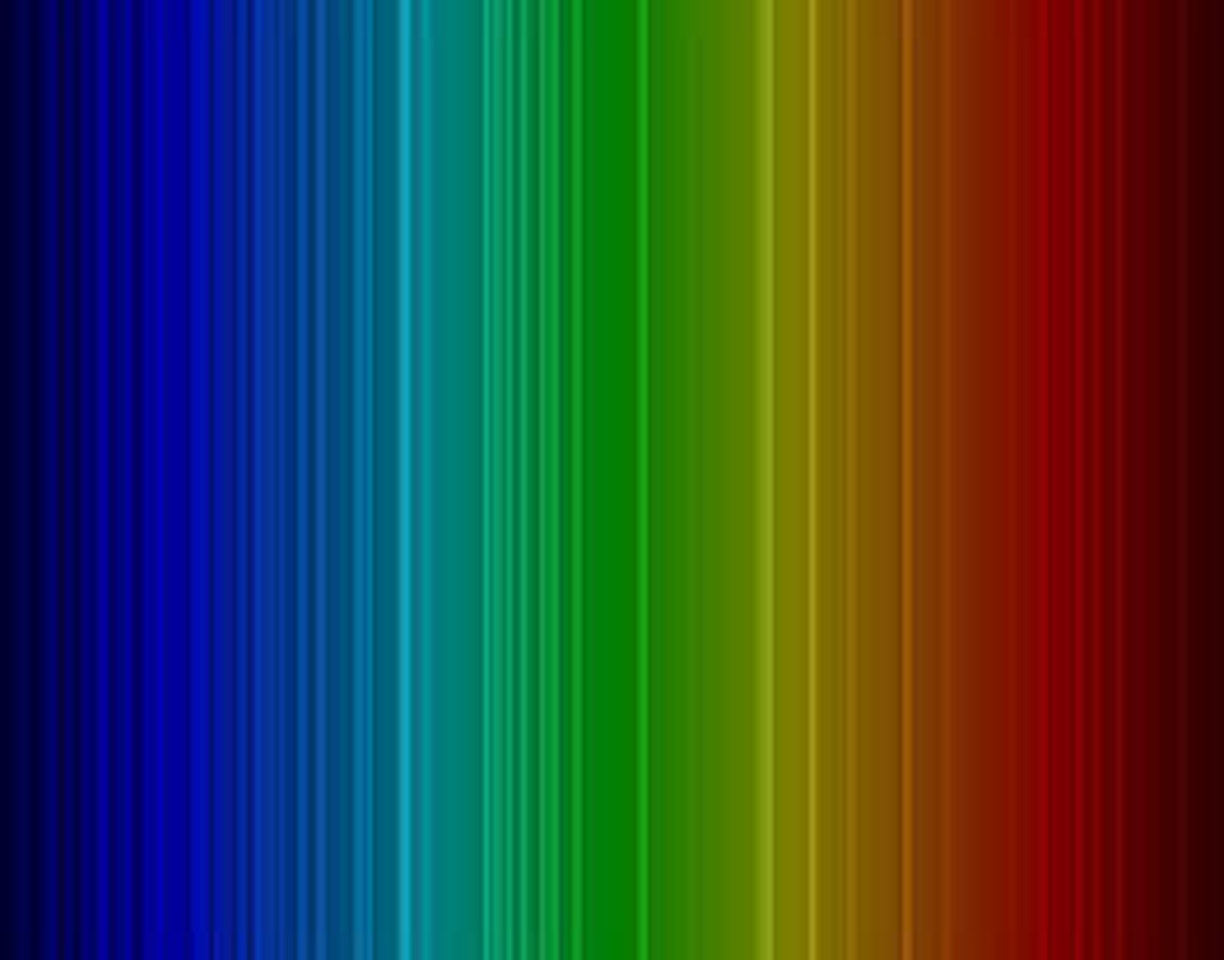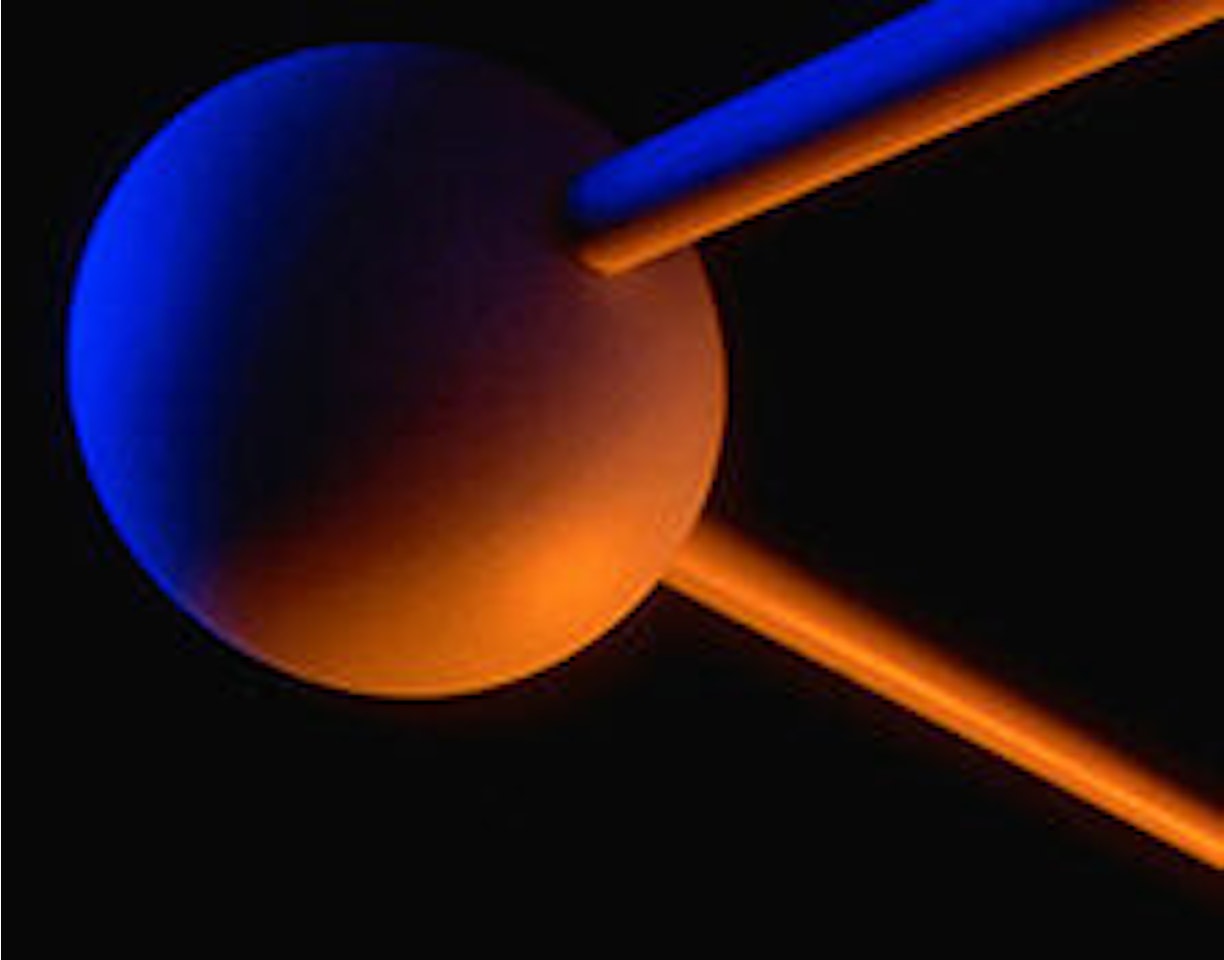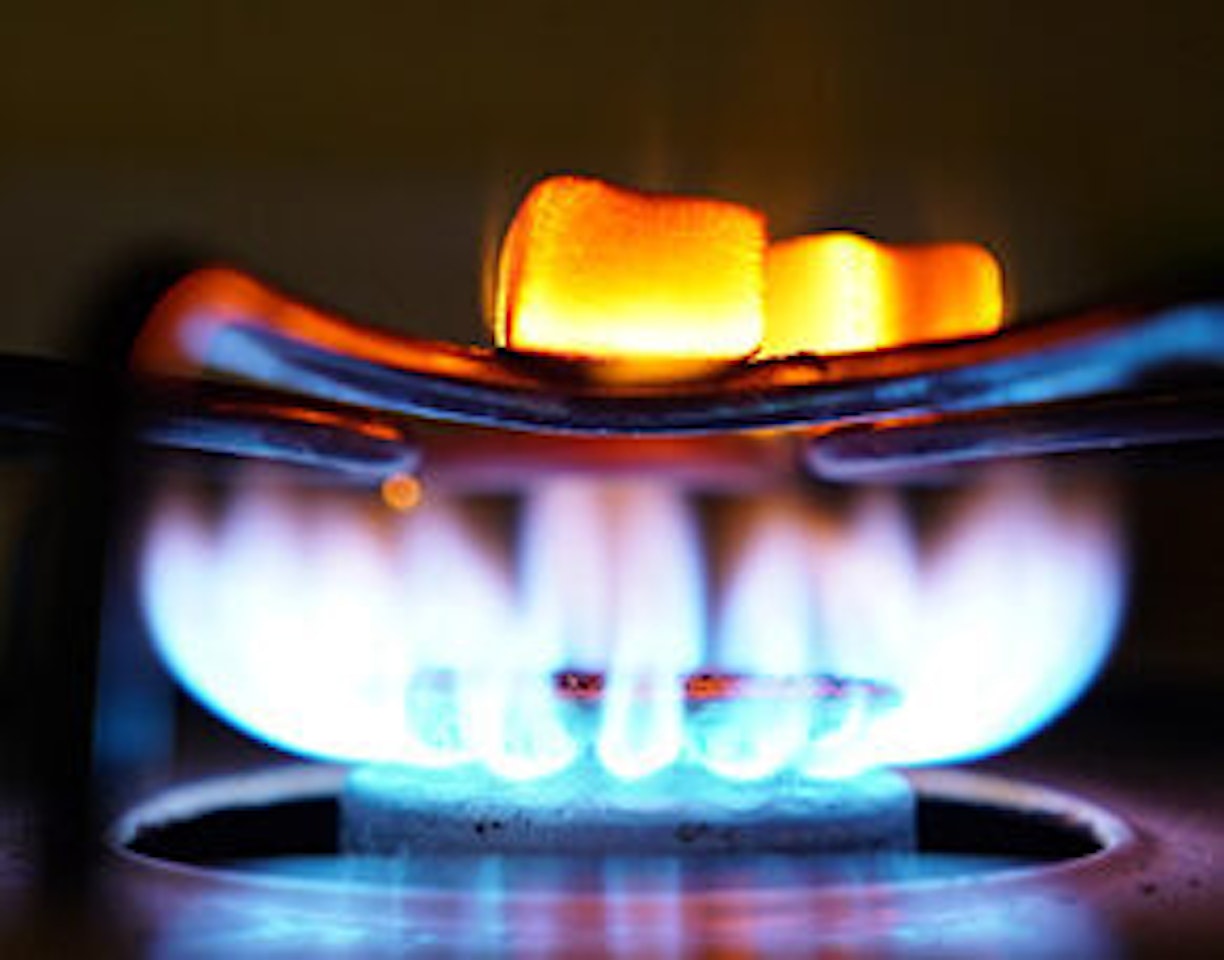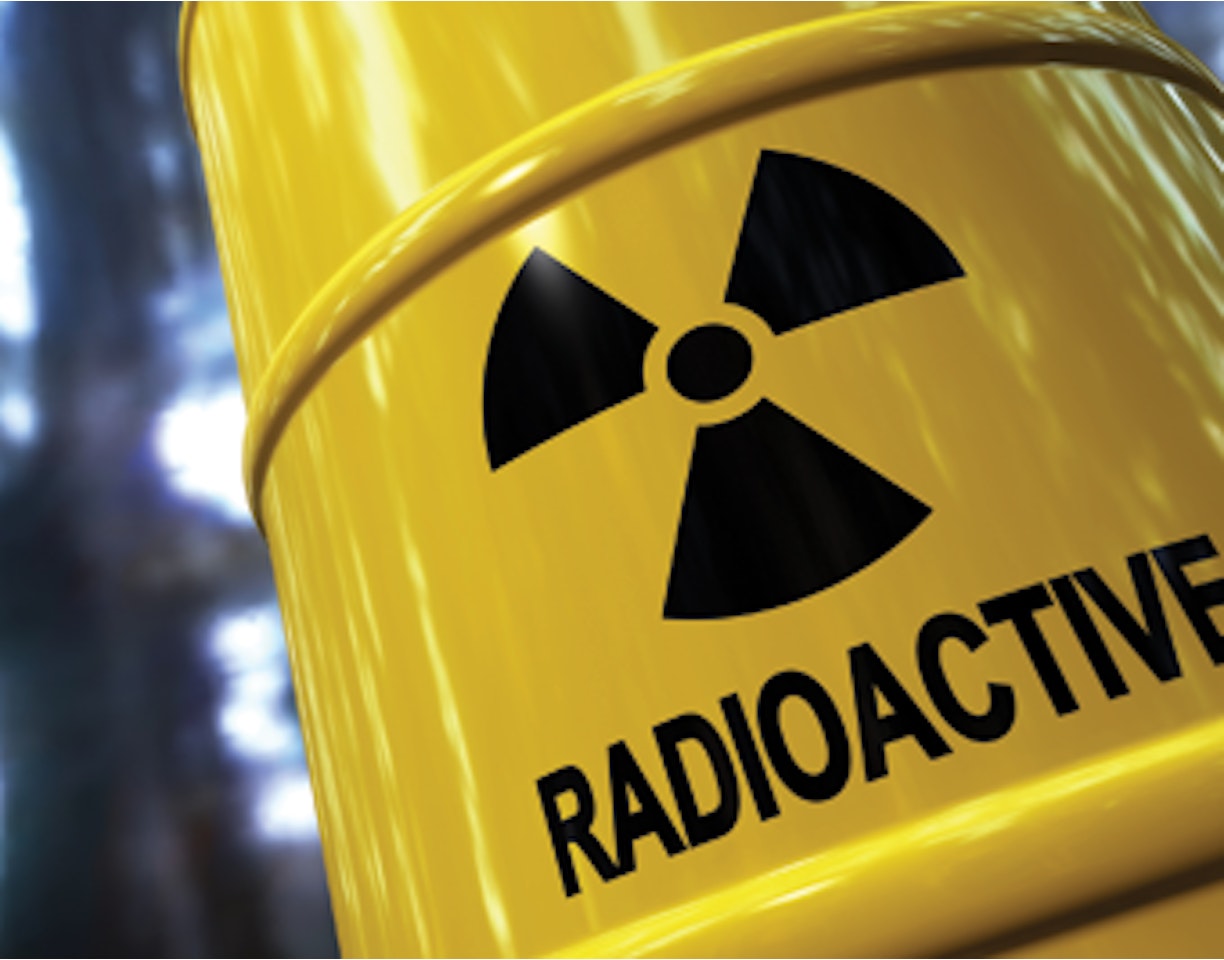Germanium detectors are semiconductor diodes having a p-i-n structure in which the intrinsic (i) region is sensitive to ionizing radiation, particularly x rays and gamma rays. Under reverse bias, an electric field extends across the intrinsic or depleted region. When photons interact with the material within the depleted volume of a detector, charge carriers (holes and electrons) are produced and are swept by the electric field to the p and n electrodes. This charge, which is in proportion to the energy deposited in the detector by the incoming photon, is converted into a voltage pulse by an integral charge sensitive preamplifier.
Because germanium has relatively low band gap, these detectors must be cooled in order to reduce the thermal generation of charge carriers (thus reverse leakage current) to an acceptable level. Otherwise, leakage current induced noise destroys the energy resolution of the detector. Liquid nitrogen, which has a temperature of 77 °K is the common cooling medium for such detectors. The detector is mounted in a vacuum chamber which is attached to or inserted into an LN2 Dewar. The sensitive detector surfaces are thus protected from moisture and condensable contaminants.

TYPES OF GERMANIUM DETECTORS
 Mirion offers the widest choice of detector types in the industry. Employing the appropriate technology in both materials and processing techniques, Mirion can offer the optimum detector for a wide range of applications. We use both p-type and n-type germanium and we use diffused, implanted, and barrier contacts to achieve this product variety.
Mirion offers the widest choice of detector types in the industry. Employing the appropriate technology in both materials and processing techniques, Mirion can offer the optimum detector for a wide range of applications. We use both p-type and n-type germanium and we use diffused, implanted, and barrier contacts to achieve this product variety.
The following illustrations and charts depict the various detector geometries that are available from Mirion, the energy range they cover, and their salient performance characteristics. Consult the individual specification sheets for detailed descriptions, performance ranges, and model availability of each type.
CRYOSTATS
 The liquid nitrogen cryostat is the most important, and perhaps the least appreciated, component in assuring reliable long term performance of a Ge detector system. Mirion manufactures its own cryostats to exacting quality standards to ensure long detector life under the harshest operating conditions.
The liquid nitrogen cryostat is the most important, and perhaps the least appreciated, component in assuring reliable long term performance of a Ge detector system. Mirion manufactures its own cryostats to exacting quality standards to ensure long detector life under the harshest operating conditions.
The standard Mirion cryostat is our Slimline Design in which the detector chamber and preamplifier are packaged together in a compact cylinder.
Low energy detectors, such as the Ultra-LEGes and Si(Li)s use our flanged cryostats which are compatible with the small diameter (25 mm) end-caps associated with this type of detector. Flanged cryostats are available as an extra-cost option for other detector types.
Mirion also offers a line of convertible cryostats which, in conjunction with detectors packaged in small vacuum chambers, can be reconfigured in the field.
For applications requiring liquid nitrogen free operation, Mirion offers the Cryolectric II. This electrically cooled cryostat uses a CFC-free refrigerant and is well suited for use in industrial and laboratory applications.
PREAMPLIFIERS
 There are only two basic types of preamplifiers in use on Ge detectors. These are charge sensitive preamplifiers, which employ either dynamic charge restoration (RC feedback), or pulsed charge restoration (Pulsed optical or Transistor reset) methods to discharge the integrator. The following figure illustrates the energy rate limitation of dc-coupled RC feedback preamps, which is a function of the feedback resistor value and the dynamic output voltage range of the integrator, which is limited to about 20 volts.
There are only two basic types of preamplifiers in use on Ge detectors. These are charge sensitive preamplifiers, which employ either dynamic charge restoration (RC feedback), or pulsed charge restoration (Pulsed optical or Transistor reset) methods to discharge the integrator. The following figure illustrates the energy rate limitation of dc-coupled RC feedback preamps, which is a function of the feedback resistor value and the dynamic output voltage range of the integrator, which is limited to about 20 volts.
The energy rate limit can be increased very substantially by choosing a lower value feedback resistor with, of course, an accompanying increase in noise. Actual performance data on a typical detector is given in the following table:

Pulsed-Optical Reset preamplifiers are widely used on low energy detectors where resolution is of utmost consideration. Eliminating the feedback resistor decreases noise without a serious impact on dead time, so long as the average energy per event is low to moderate. At 5.9 keV/event, a Mirion 2008 preamp may process almost 1000 pulses between resets. Since the reset recovery time is 2-3 amplifier pulse widths, little data is lost in this situation. Optical feedback systems can, however, exhibit long recovery times due to light activated surface states in the FET. Proper selection and treatment of components can minimize the problem, but it is generally present to some degree in pulsed-optical systems. With high energies, where resets necessarily occur very often, perhaps after as few as 10 events, this spurious response can be a serious problem. As a consequence, pulsed-optical feedback systems are not
generally used with coaxial detectors.
The Transistor Reset Preamp was developed in an attempt to overcome the problems associated with Pulsed-Optical Reset Preamps in high energy, high rate systems. The feedback capacitor is discharged by means of a transistor switch connected to the FET gate. This transistor adds some capacitance and noise to the input circuit, but this is tolerable in most applications involving high count or energy rates. Compared to an RC preamplifier with selected feedback resistor for high rate performance, the Transistor Reset Preamplifier will exhibit less noise but will sacrifice dead time because the amplifier will require 2-3 pulse widths to recover from the periodic reset of the preamplifier. Thus, in applications demanding high throughput rates, the Transistor Reset Preamp is not a good choice. It can be used in situations where the energy rate is so high that an RC preamp might saturate – but the throughput rate may be diminishingly small in this case.
SYSTEMS
In addition to the NIMs, MCAs, and Computer Systems that are described elsewhere in this catalog, Mirion offers many options and accessories that are designed to complement our line of germanium detectors. Below is a partial listing of the equipment and systems that we offer. Some of these systems are described in separate specification sheets and brochures while others are custom tailored. We stand ready to propose and supply systems that will meet your specific requirements. Contact your local Mirion representative or the factory, describing your problem or application, and we will send you a proposal immediately.
ACCESSORIES
• Liquid nitrogen supply Dewars
• LN2 transfer devices
• Automatic LN2 transfer systems
• LN2 level alarms
• Lead shields for low level counting
• Compton suppression spectrometers


 Mirion offers the widest choice of detector types in the industry. Employing the appropriate technology in both materials and processing techniques, Mirion can offer the optimum detector for a wide range of applications. We use both p-type and n-type germanium and we use diffused, implanted, and barrier contacts to achieve this product variety.
Mirion offers the widest choice of detector types in the industry. Employing the appropriate technology in both materials and processing techniques, Mirion can offer the optimum detector for a wide range of applications. We use both p-type and n-type germanium and we use diffused, implanted, and barrier contacts to achieve this product variety. The liquid nitrogen cryostat is the most important, and perhaps the least appreciated, component in assuring reliable long term performance of a Ge detector system. Mirion manufactures its own cryostats to exacting quality standards to ensure long detector life under the harshest operating conditions.
The liquid nitrogen cryostat is the most important, and perhaps the least appreciated, component in assuring reliable long term performance of a Ge detector system. Mirion manufactures its own cryostats to exacting quality standards to ensure long detector life under the harshest operating conditions. There are only two basic types of preamplifiers in use on Ge detectors. These are charge sensitive preamplifiers, which employ either dynamic charge restoration (RC feedback), or pulsed charge restoration (Pulsed optical or Transistor reset) methods to discharge the integrator. The following figure illustrates the energy rate limitation of dc-coupled RC feedback preamps, which is a function of the feedback resistor value and the dynamic output voltage range of the integrator, which is limited to about 20 volts.
There are only two basic types of preamplifiers in use on Ge detectors. These are charge sensitive preamplifiers, which employ either dynamic charge restoration (RC feedback), or pulsed charge restoration (Pulsed optical or Transistor reset) methods to discharge the integrator. The following figure illustrates the energy rate limitation of dc-coupled RC feedback preamps, which is a function of the feedback resistor value and the dynamic output voltage range of the integrator, which is limited to about 20 volts.


